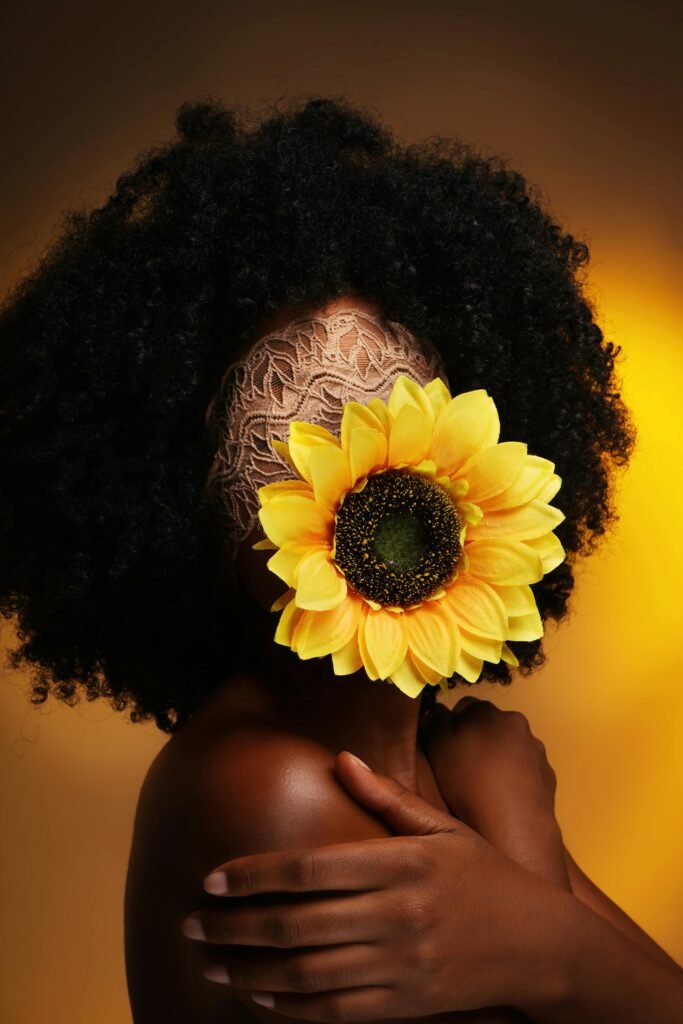You have decided to embrace the world of weaves and enhance your hairstyle with the luxurious and natural look of human hair. But with so many options available, how do you select high-quality hair that will not only look stunning but also last? In this ultimate guide, you will discover the essential factors to consider when choosing human hair for weaves. From the different types of hair to the various textures and lengths, you will gain valuable insights to help you make an informed decision and achieve the flawless and fabulous look you desire.

This image is property of images.pexels.com.
Understanding Weave Options
Types of Weave
When it comes to choosing a weave, there are various types available in the market. Some of the popular options include sew-in weaves, glue-in weaves, and clip-in weaves. Sew-in weaves involve braiding your natural hair and then sewing the extensions onto the braids. Glue-in weaves, on the other hand, utilize hair bonding glue to attach the extensions to your natural hair. Lastly, clip-in weaves are temporary options that can be easily clipped and removed without requiring any adhesive. Each weave type has its own advantages and disadvantages, so it is important to consider your desired style, convenience, and lifestyle when choosing the right option for you.
Different Weave Techniques
In addition to the types of weaves, there are also different techniques for installing them. These techniques include traditional sew-in, net weave, and invisible part sew-in. The traditional sew-in technique involves braiding the natural hair in a specific pattern and then sewing the extensions onto the braids. The net weave technique utilizes a net that is sewn onto the braids, providing a flat surface for attaching the extensions. Lastly, the invisible part sew-in technique involves using a closure or frontal to create a seamless parting and natural-looking hairline. Each technique offers a unique way of installing and styling the weave, so it is essential to consult with a professional hairstylist to determine which technique suits your needs.
Factors to Consider When Choosing a Weave
When choosing a weave, there are several factors that you should take into consideration. One important factor is the texture and color of the extensions. It is crucial to select extensions that closely match the texture and color of your natural hair for a seamless blend. Additionally, considering the length and weight of the extensions is crucial for achieving your desired look and ensuring the comfort of the weave. Lastly, the maintenance and care required for each type of weave should be taken into account, as some may require more upkeep and styling than others. By considering these factors, you can choose a weave that not only enhances your appearance but also fits well with your lifestyle.
Determining the Source of Human Hair
Virgin Hair
Virgin hair refers to hair that has never been chemically processed or treated, including dyeing, perming, or relaxing. This type of hair is obtained directly from the donor and is considered to be the highest quality human hair available. Virgin hair retains its natural texture and color, providing a more authentic and seamless look when used for weaves. Investing in virgin hair ensures that you are getting unaltered and undamaged hair, resulting in a more natural and long-lasting style.
Remy Hair
Remy hair is another popular choice for weaves. This type of hair is collected from donors and is also considered high-quality. What sets Remy hair apart is that the hair cuticles are kept intact and aligned in the same direction, ensuring a smoother and tangle-free result. Remy hair is often preferred for its natural appearance and ease of styling. It can be dyed, curled, and straightened just like natural hair without losing its quality.
Non-Remy Hair
Non-Remy hair is a more affordable option compared to virgin and Remy hair. This type of hair is collected from various sources, and the cuticles may not be aligned in the same direction. Non-Remy hair is often chemically processed to remove the cuticles and any imperfections, resulting in a smooth and shiny appearance. However, due to the processing, non-Remy hair may not last as long or maintain its quality as well as virgin or Remy hair.
Synthetic Hair
Synthetic hair is a man-made option for weaves that seeks to replicate the look and feel of natural hair. While synthetic hair can be more affordable, it often lacks the natural appearance and versatility of human hair. Synthetic hair cannot be styled with heat tools and may not blend as seamlessly with natural hair. However, it does offer a wide variety of colors and textures, making it a suitable choice for temporary or costume hairstyles. It is important to note that synthetic hair has a shorter lifespan compared to human hair and may need to be replaced more frequently.

This image is property of images.pexels.com.
Evaluating Hair Origin and Quality
Country of Origin
The country of origin plays a significant role in determining the quality and characteristics of human hair. Different countries are known for producing specific types of hair, each with its own unique attributes. For example, hair from countries like Brazil, Peru, and India is highly sought after due to its thickness, strength, and versatility. On the other hand, hair from countries like China may be more readily available but may not always meet the desired quality standards. It is essential to research and understand the characteristics of hair from different countries to make an informed decision about the origin of your weave.
Hair Quality and Texture
Apart from the country of origin, the overall quality and texture of the hair are crucial aspects to consider. High-quality hair should feel soft, smooth, and free from tangles or breakage. The texture of the hair should also match your natural hair to ensure a seamless and natural look. Whether you prefer straight, wavy, or curly hair, it is important to choose extensions that closely match the texture and quality of your own hair for a flawless blend.
Cuticle Alignment
Cuticle alignment is an essential factor in evaluating the quality of human hair for weaves. When the cuticles are intact and aligned in the same direction, the hair is less likely to tangle, mat, or become frizzy. This is especially important for longer-lasting weaves, as well-aligned cuticles contribute to the overall strength and longevity of the hair. Examining the cuticles of the hair extensions can provide valuable insight into their quality and potential lifespan.
Hair Length and Weight
The desired length and weight of the weave are personal preferences that should be considered when selecting human hair. Longer hair extensions typically require more maintenance and care, as they are more prone to tangling and breakage. Additionally, the weight of the hair should be comfortable for your natural hair and scalp. It is important to find a balance between achieving your desired look and ensuring the overall health and comfort of your hair.
Identifying Authenticity and Ethical Practices
Researching Hair Suppliers
To ensure the authenticity and ethical practices of the hair supplier, thorough research is necessary. Take the time to investigate the supplier’s reputation, customer reviews, and any available information about their sourcing and manufacturing processes. Look for suppliers who prioritize transparency and actively engage in fair trade practices.
Checking Authenticity Certifications
Authenticity certifications can be a valuable indicator of the quality and origin of the human hair. Look for certifications that verify the authenticity and ethical sourcing of the hair, such as the Fair Trade label or certifications from a reputable industry association. These certifications provide assurance that the hair has been sourced responsibly and meets certain quality standards.
Considering Ethical Sourcing and Labor Practices
Ethical sourcing and labor practices should also be taken into consideration when selecting human hair for weaves. Ensure that the hair supplier adheres to fair trade principles and treats their workers and suppliers with respect. Look for suppliers who prioritize sustainability, fair wages, and safe working conditions. By supporting ethical practices, you can contribute to positive change in the industry while enjoying high-quality weaves.

This image is property of images.pexels.com.
Decoding Hair Grades and Standards
Understanding Hair Grading System
Hair grading systems can vary in the industry, but generally, they are used to classify the quality and condition of human hair. The grading system often includes a scale from 1 to 10, with 10 being the highest quality. Factors such as virginity, cuticle alignment, texture, and overall condition of the hair contribute to the grading. It is important to understand the grading system used by the supplier and how it aligns with your quality expectations.
Recognizing Industry Standards
In addition to hair grading systems, there are industry standards followed by reputable suppliers and manufacturers. These standards ensure that the hair meets certain quality criteria and ethical sourcing practices. Look for suppliers who comply with industry standards, such as ISO certifications or membership in reputable professional organizations. By recognizing and understanding these standards, you can make informed decisions about the quality and authenticity of the hair you choose.
Weave Care and Maintenance
Proper Washing and Conditioning Techniques
Taking care of your weave is essential for maintaining its quality and longevity. Proper washing and conditioning techniques can help keep the hair clean, moisturized, and free from tangles. It is important to use sulfate-free shampoos and conditioners that are specifically formulated for human hair weaves. Gently detangling the hair with a wide-toothed comb and allowing it to air dry can also help prevent damage and breakage.
Using Heat Styling Tools Safely
If you plan to use heat styling tools on your weave, it is important to do so safely to avoid damaging the hair. Use a heat protectant spray before applying any heat and avoid using excessively high temperatures. It is also recommended to limit the frequency of heat styling to prevent the hair from becoming dry and brittle.
Preventing Tangling and Matting
Tangling and matting are common issues that can occur with weaves, especially when not properly cared for. To prevent tangling and matting, avoid excessive manipulation of the hair, such as excessive brushing or combing. If tangles do occur, gently detangle them using your fingers or a wide-toothed comb, starting from the ends and working your way up.
Tips for Prolonging Weave Lifespan
To prolong the lifespan of your weave, there are a few additional tips to keep in mind. Avoid sleeping with wet hair or in rough materials that can cause friction. Cover your hair with a silk or satin scarf or pillowcase to minimize rubbing and tangling. Regularly trim the ends of your weave to remove any split ends, and avoid using heavy oils or products that can weigh down the hair. By following these tips, you can enjoy a longer-lasting and well-maintained weave.
Cost Considerations
Determining Your Budget
Before purchasing a weave, it is essential to determine your budget. Weaves can vary significantly in price depending on the quality of the hair, the length, and the desired style. Consider your budget and how much you are willing to invest in high-quality human hair. Remember that while more affordable options may be tempting, they may not always provide the same level of quality and longevity as higher-priced weaves.
Evaluating Price vs. Quality
When it comes to buying weaves, the price is often indicative of the quality. Higher-priced weaves typically use higher-quality human hair and undergo more rigorous sourcing and manufacturing processes. While they may require a larger upfront investment, they often provide better longevity and overall appearance. On the other hand, lower-priced weaves may not offer the same level of quality and may need to be replaced more frequently.
Weighing Long-Term Investment
When considering the cost of a weave, it is important to weigh the long-term investment. While high-quality weaves may come with a higher price tag initially, they often have a longer lifespan and require less frequent replacement. This can ultimately save you money in the long run, as you won’t need to constantly purchase new extensions. By investing in a high-quality weave, you can achieve a more natural and long-lasting hairstyle while minimizing ongoing expenses.
Finding Reliable Suppliers
Researching Online Suppliers
When searching for reliable suppliers, the internet can be a valuable resource. Take the time to research different online suppliers and read customer reviews to gauge the reputation and quality of their products. Look for suppliers with positive feedback and a strong online presence. It is also advisable to purchase from suppliers who provide detailed information about their sourcing practices and offer clear communication channels for any questions or concerns.
Reading Customer Reviews
Reading customer reviews is an excellent way to gain insight into the experiences of other buyers. Look for reviews that specifically mention the quality, authenticity, and customer service provided by the supplier. Pay attention to any recurring positive or negative experiences mentioned by multiple reviewers. Keep in mind that while customer reviews can be helpful, personal preferences and experiences may vary.
Considering Local Hair Stores
Local hair stores can also be a reliable source for purchasing high-quality human hair. Visiting a physical store allows you to see and feel the hair before making a purchase. It also provides an opportunity to ask questions directly to the store staff, who are often knowledgeable about different weave options. Local hair stores may also offer additional services such as professional installation, maintenance tips, and consultation.
Consulting with Professionals
Seeking Advice from Hairstylists
Consulting with a professional hairstylist can be extremely beneficial when choosing a weave. They have extensive knowledge and experience in working with different types of hair and can provide personalized recommendations based on your specific hair type, desired style, and lifestyle. A hairstylist can also assess the condition of your natural hair and make recommendations that promote healthy growth and minimize damage or breakage.
Getting Recommendations from Experienced Buyers
Experienced buyers who have used weaves before can also provide valuable insights and recommendations. Reach out to friends, family members, or colleagues who have firsthand experience with purchasing and wearing weaves. Ask them about their preferred suppliers, best practices for care and maintenance, and any pitfalls or challenges they encountered along the way. Their advice and recommendations can help you make a more informed decision and avoid potential mistakes.
Finalizing Your Purchase
Choosing the Right Color
When finalizing your weave purchase, selecting the right color is crucial for achieving a natural and seamless blend. Take into consideration the color of your natural hair, as well as any desired highlights or undertones. Look for color swatches or samples provided by the supplier, and compare them to your natural hair in different lighting conditions. If you are unsure, consult with a professional hairstylist who can guide you in choosing the perfect color match.
Selecting the Desired Length
The length of the weave is another important factor to consider. Determine the desired length based on your personal preferences and the overall look you want to achieve. Keep in mind that longer weaves require more maintenance, while shorter lengths may offer more convenience and ease of styling. It can be helpful to try on different lengths or seek the advice of a hairstylist to ensure the chosen length complements your facial features and lifestyle.
Considering Additional Factors
Before finalizing your purchase, consider any additional factors that may be important to you. This can include the type of extensions (e.g., straight, wavy, curly), the desired volume and thickness, and any specific features or accessories that complement your style. Take the time to explore different options and compare them against your preferences and needs. By considering these factors, you can make a well-informed decision and confidently purchase the right weave for you.
In conclusion, selecting high-quality human hair for weaves involves understanding the different weave options, determining the source of the hair, evaluating its origin and quality, identifying authenticity and ethical practices, decoding hair grades and standards, considering weave care and maintenance, factoring in cost considerations, finding reliable suppliers, consulting with professionals, and finalizing your purchase. By following these guidelines and taking into account the specific needs and preferences, you can confidently choose a weave that enhances your appearance, suits your lifestyle, and provides you with a beautiful and long-lasting hairstyle.
